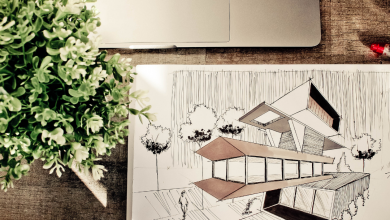Chaos Group released (a few months ago) the new version of V-Ray for SketchUp, increasing the speed and simplicity of the main SketchUp renderer.
Table of Contents
How did the new V-Ray for SketchUp come about?
After more than four years of research and development, V-Ray for SketchUp Next was created to improve the SketchUp workflow by increasing speed, so designers can produce faster, cleaner renders with less effort. V–Ray Next, as we have already mentioned, is also compatible with the new 2019 software, as well as with the 2016 and 2018 versions.
Smarter Rendering
New V-Ray Scene Intelligence can now automatically analyze a 3D scene at the start of a render, optimizing some of the most common decisions a 3D artist can make. As for lighting, the new Adaptive Dome Light (ADL) provides more accurate ambient lighting based on up to 7x faster images. ADL is exceptionally fast when working with interiors and eliminates the need to add portal lights to windows and openings.
Finding the perfect camera exposure or white balance is no longer a problem. Once the scene is loaded, White Balance and Auto Exposure return to the correct settings, making the entire framing and shooting process a breeze. A new NVIDIA AI Denoiser has also been added to V-Ray for SketchUp, so users can automatically denoise and clean up updates as they work.
Faster Renders with V-Ray for SketchUp 2019
One of the prominent benefits of using V-Ray for SketchUp 2019 is the ability to render faster and more efficiently. V-Ray is a powerful rendering tool that seamlessly integrates with SketchUp, allowing you to create high-quality, photorealistic images faster and more accurately.
With V-Ray for SketchUp 2019, you’ll be able to take advantage of its advanced rendering engine that uses state-of-the-art algorithms to speed up the rendering process. This means you’ll be able to get impressive quality visual results in less time, which is especially beneficial when you’re working on projects with tight deadlines or need to perform multiple design iterations.
V-Ray’s integration with SketchUp also makes it easy to adjust and optimize rendering parameters. You can control aspects such as lighting, materials, textures, and visual effects with precision, allowing you to achieve high-quality end results that match your needs and creative visions.
In addition, V-Ray for SketchUp 2019 offers a number of features and tools that improve the efficiency of the rendering process. You can take advantage of features like batch rendering, which allows you to render multiple scenes or views at the same time, saving time and increasing productivity. You can also render in the cloud, using V-Ray compatible remote rendering services, allowing you to take advantage of additional resources and further speed up your rendering times.
In short, V-Ray for SketchUp 2019 is a powerful tool that allows you to render faster and more efficiently. V-Ray’s integration with SketchUp, combined with its advanced rendering engine and optimized features, gives you the ability to create high-quality, photorealistic images in less time. With V-Ray for SketchUp 2019, you can supercharge your workflow, achieve stunning visual results, and meet demanding deadlines more efficiently.
What are the main features and functionality introduced by V-Ray Next for SketchUp?
The main novelties are:
- New lighting analysis tools: It’s now easier to visualize the real-world lighting values of a scene in lux or footcandle.
- New Material Properties Metalness – A new addition to the standard V – Ray material; offers better compatibility with PBR and substance design materials.
- Color Correction Curves – Optimize texture colors directly in SketchUp without having to go back to an image editor.
- Material ID and MultiMatte render elements – Render 2D masks of 3D objects for quick fixes in Photoshop and other image editors.
- V-Ray scene and material sharing – Seamless transfer of assets from other V – Ray applications (Rhino, Revit and 3ds Max).
How much does V-Ray Next for SketchUp cost?
A full license for the workstation is priced at $790, while upgrades are on the market for about $395. There are also annual licenses at a cost of $350. Whereas, if your wish is simply to try a 30-day trial version, just follow the instructions on the dedicated page.





